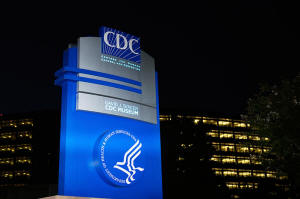'Nightmare bacteria' cases are increasing in the US
[September 24, 2025]
By MIKE STOBBE
NEW YORK (AP) — Infection rates from drug-resistant “nightmare bacteria”
rose almost 70% between 2019 and 2023, according to a new report from
Centers for Disease Control and Prevention scientists.
Bacteria that are difficult to treat due to the so-called NDM gene
primarily drove the increase, CDC researchers wrote in an article
published Monday in the Annals of Internal Medicine. Only two
antibiotics work against those infections, and the drugs are expensive
and must be administered through an IV, researchers said.
Bacteria with the gene were once considered exotic, linked to a small
number of patients who received medical care overseas. Though the
numbers are still small, the rate of U.S. cases jumped more than
fivefold in recent years, the researchers reported.
“The rise of NDMs in the U.S. is a grave danger and very worrisome,”
said David Weiss, an Emory University infectious diseases researcher, in
an email.
It's likely many people are unrecognized carriers of the drug-resistant
bacteria, which could lead to community spread, the CDC scientists said.
That may play out in doctors’ offices across the country, as infections
long considered routine and easy to treat — like urinary tract
infections — could become chronic problems, said Dr. Maroya Walters, one
of the report’s authors.

Antimicrobial resistance occurs when germs such as bacteria and fungi
gain the power to fight off the drugs designed to kill them. The misuse
of antibiotics was a big reason for the rise — unfinished or unnecessary
prescriptions that didn’t kill the germs made them stronger.
In recent years, the CDC has drawn attention to “ nightmare bacteria ”
resistant to a wide range of antibiotics. That includes carbapenems, a
class of antibiotics considered a last resort for treatment of serious
infections.
Researchers drew data from 29 states that do the necessary testing and
reporting of carbapenem-resistant bacteria.
[to top of second column]
|

A sign marks the entrance to the U.S. Centers for Disease Control
and Prevention headquarters Aug. 27, 2025, in Atlanta. (AP Photo/Brynn
Anderson, File)

They counted 4,341 cases of carbapenem-resistant bacterial infections
from those states in 2023, with 1,831 of them the NDM variety. The
researchers did not say how many of the infected people died.
The rate of carbapenem-resistant infections rose from just under 2 per
100,000 people in 2019 to more than 3 per 100,000 in 2023 — an increase
of 69%. But the rate of NDM cases rose from around 0.25 to about 1.35 —
an increase of 460%, the authors said.
A researcher not involved in the study said the increase is probably
related to the COVID-19 pandemic.
“We know that there was a huge surge in antibiotic use during the
pandemic, so this likely is reflected in increasing drug resistance,”
said Dr. Jason Burnham, a Washington University researcher, in an email.
The CDC’s count is only a partial picture.
Many states are not fully testing and reporting cases. Even in states
that do, cases tend to be among hospital patients sick enough to warrant
special testing. Many hospitals also aren’t able to do the testing
needed to detect certain forms of genetic resistance.
The CDC researchers did not have data from some of the most populous
states, including California, Florida, New York and Texas, which means
the absolute number of U.S. infections “is definitely underestimated,”
Burnham said.
This is not the first study to report a rise. A CDC report published in
June noted an increase in NDM cases in New York City between 2019 and
2024.
All contents © copyright 2025 Associated Press. All rights reserved |